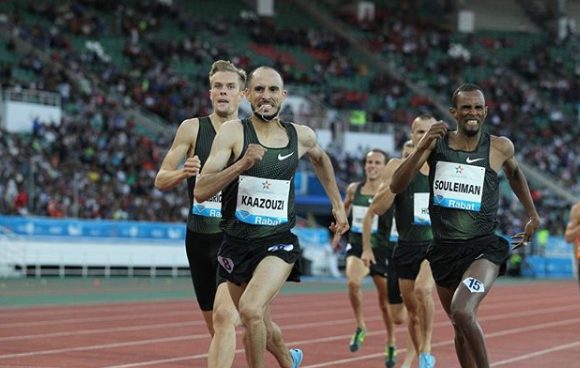Could running incorporate leader jerseys into track races?
When runners represent their sponsors as opposed to their countries, participants wear nearly identical uniforms from various shoe brands. This can become uninteresting to the less informed viewer

https://www.instagram.com/p/BlOB0FdguK3/?hl=en&taken-by=diamondleagueathletics
A typical Diamond League viewing experience, where runners represent their sponsors as opposed to their countries, sees participants wearing nearly identical uniforms from various shoe brands. Without any representation of nationality, races can become uninteresting to the less informed fan.
At last week’s 24th annual IAAF council meeting, the idea of identical runner kits in the Diamond League was discussed. IAAF president Sebastian Coe said, “We discussed the need to address the issue of large numbers of athletes at the Diamond League wearing identical kits, which causes confusion for spectators and broadcasters. This has to change and a group has been set up to drive this change.”
https://www.instagram.com/p/Bk3Cz7PD7Ut/?hl=en&taken-by=diamondleagueathletics
RELATED: Inside Diamond League race day with Olympian Gabriela Stafford
In the Diamond League, runners are able to score points based on their placing which counts toward qualification for the Diamond League final at the end of the summer. The league includes 32 different disciplines and follows a championship model. Each discipline is staged four or six times before the final. At each meeting athletes are awarded points for a top eight finish (8 points for first, 1 point for eighth). The top eight athletes in the sprint, and the top 12 athletes in the distance events will qualify for the final.
https://www.instagram.com/p/Bl0hy-4n5kN/?hl=en&tagged=yellowjersey
Enter a thought experiment: what if running was to become a little more like cycling in how they identify their competitors? What if Diamond League points corresponded to a specific singlet, like the leader jerseys that riders get in cycling?
RELATED: A day in the life of steeplechaser Matt Hughes
For example, there could be singlets given to four categories of runners. You would have: young runner, event leader, most versatile and overall leader.
The young runner singlet would go to the leading runner under the age of 23. In cycling, the young rider jersey goes to the strongest rider under the age of 25, but should be lowered when applying the jersey system to running. According to a study done by The Guardian, the average age of Olympic cyclists in 2012 was 28.3, whereas the average age of track athletes is 26.2. Considering the two year difference, the young runner singlet should be given to a 23 year-old runner. This singlet would give attention to the young talent coming up in the sport.
The event leader singlet would go to the runner who has accumulated the most points in the event thus far.
The most versatile singlet would recognize the runner who had accumulated the most points over more than one event. Many runners will compete in the multiple events within the Diamond League. This would recognize those who are consistently strong across events, and recognize performances from earlier in the year.
Finally, the overall leader singlet would go to the runner with the most points in the Diamond League. The other singlets would have multiple recipients, but overall leader would be reserved for top male and top female in the league.
There are many fans who would already know these statistics about the runners in a race, but there are even more fans who would not. Providing runners with singlets that signify their standing in a competition allows viewers to see a story unfold within the race, as opposed to a bunch of athletes wearing nearly identical uniforms. We argue that the Diamond League would be a perfect place to start.


